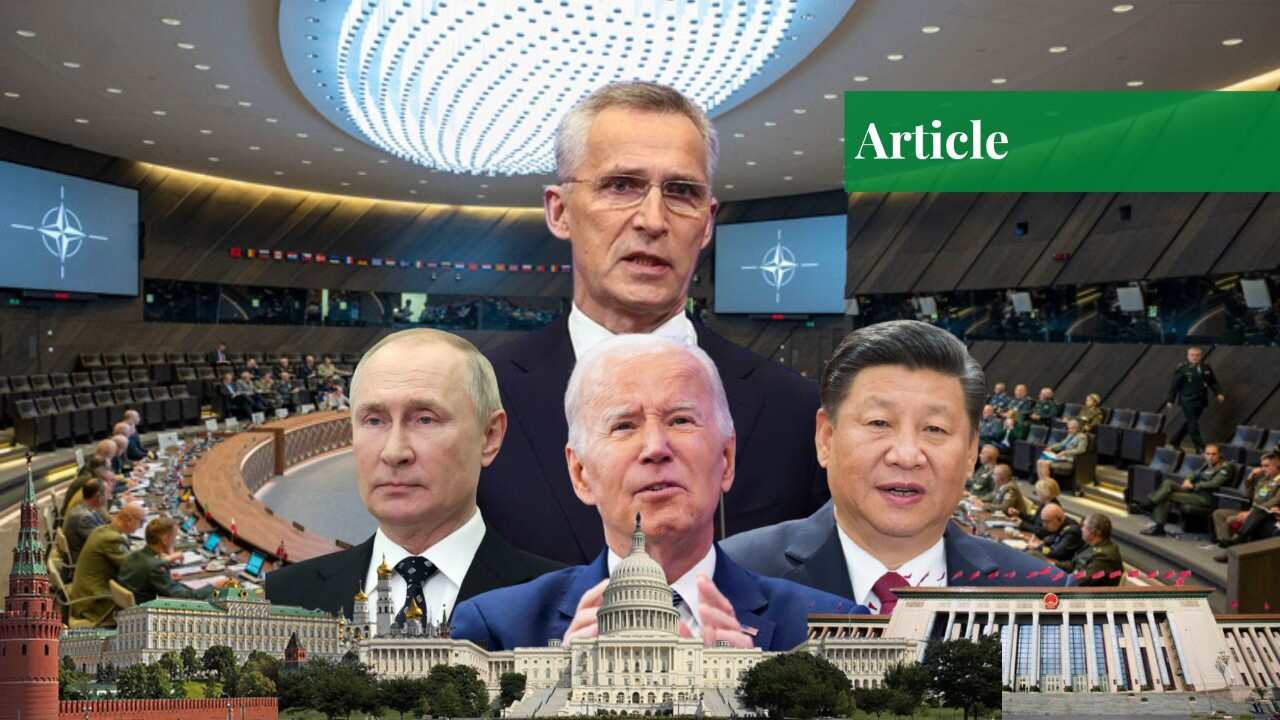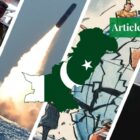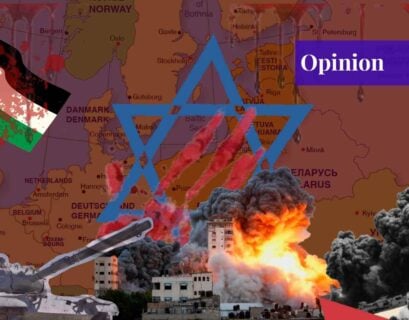Mr. Bilal is an agronomist student at the University of Agriculture, Faisalabad. He has been writing blogs on national and international politics and international relations since 2017.
Introduction
“Keep the Russians out, the Americans in, and the Germans down” – Lord Ismay (NATO’s First Secretary-General, 1952) That was the motto of the North Atlantic Treaty Organization (NATO) that was established in 1949, in the aftermath of World War II when broken economies and exhausted military infrastructure in Western Europe were facing a wave of communist political expansion.
In 1948, the United Kingdom, France, Belgium, Luxembourg, and the Netherlands signed the Brussels Pact, but they soon came to the realisation that it was not enough to counter the Soviet threat. In March 1948, Communists took over Czechoslovakia through a coup, which then prompted a series of measures aimed at strengthening the economic and military defences of the West.
These defences included a historical Marshall Plan, the creation of West Germany, and rigorous attempts to curb the spread of communism in France, Greece, and Italy. In reaction to that, the Warsaw Pact created a defensive alliance between the Soviet Union and seven other Baltic States in Eastern Europe.
NATO’s Former Strategic Concepts
Since the inception of the alliance, NATO’s successive strategic doctrines released every ten years or so, revolved around deterring and defending Western Europe from a singular yet multi-dimensional threat, the Soviet Union. While NATO’s first strategic concept was straightforward about deterring aggression and engaging only when attacked, the second strategic concept laid out the establishment of a centralized military command and appointed Dwight D. Eisenhower as Supreme Allied Commander of Europe (SACEUR) with the accession of Greece and Turkey.
NATO’s third and fourth strategic concepts released in 1957 and 1968 respectively outlined its approach to retaliation and flexibility in responses. The fall of the Soviet Union and of the Berlin Wall was supposed to alter the military posture of the alliance, and it did change but in the opposite way.
The fifth strategic concept released in 1991 triggered a 30-year-long NATO expansion into Eastern Europe as part of ‘expanding European security through cooperation with former adversaries’. The strategies of 1999 and 2010 identified the threats of terrorism, proliferation of nuclear, biological, chemical weapons and ballistic missiles, cyberattacks and environmental issues.
The NATO 2022 Strategic Concept
The major highlights of the NATO 2022 strategic concept are pledging to respond to Russian actions without seeking confrontation, regarding terrorism as a significant asymmetric threat, and noting that the instability in the Middle East and Africa also endangers Europe.
While iterating the alliance’s intentions as defensive, it also commits that “no one should doubt our strength and resolve to defend every inch of Allied territory”. That’s as bold as it can get in the face of the continuous Russian invasion that has entered its eight month. The European Union and the United States brought more than 2700 sanctions on Moscow in a matter of days, rendering Russia the most sanctioned nation on Earth.
Travel sanctions and freezing assets of Russian President Vladimir Putin, his cabinet and associate oligarchs; restrictions on the biggest financial institutions and companies; and severing Russian banks from the SWIFT international payment systems, but the West isn’t stopping there.
At the latest G7 Summit, World’s leading democratic economies pledged to impose tougher sanctions on Moscow e.g., banning the imports of Russian gold, its third-biggest source of income, and putting price caps on Russian oil still shipping across the globe. Although their impact on the war is yet to be seen, the NATO 2022 strategic concept isn’t just words printed on paper.
Major Components of the 2022 Strategy
For the very first time, China’s ‘coercive policies’, ‘malicious’ cyber operations, its ‘confrontational’ rhetoric and strengthening ties with the Russian Federation were declared a ‘systematic challenge’ to the rules-based international order. The Chinese Foreign Ministry condemned the rhetoric, stating NATO must “give up the Cold War mentality, zero-sum game and the practice of creating enemies, and not try to mess up Asia and the whole world after disrupting Europe.”
Terrorism was the core security issue post 9/11 when NATO first time invoked Article 5, of collective defence and took off on the mission to cleanse Afghan heights from terrorists. The ambitious endeavour didn’t turn out pretty well and resulted in a messy withdrawal after two decades of exhaustive fighting.
The invasion of Crimea in 2014 by Russia kept haunting NATO as the Minsk Accords were nearly impossible to implement, especially when Moscow absolved itself of any responsibility by stating that it wasn’t a party. NATO leaders still regret letting Putting go away with the invasion of 2014. Hence, the NATO 2022 strategy concept can be an effort to re-orient and re-configure itself with the fundamental goal of NATO, the collective defence of the Euro-Atlantic region.
NATO’s Secretary General Jens Stoltenberg ridiculed Putin at the NATO summit stating that Putin ‘wanted less NATO’ but ended up ‘getting more,’ referring to the joining of Sweden and Finland and other defence initiatives. All of this seems really great from an American or NATO perspective, but the threat assessment is one thing and actually mitigating or neutralizing that threat is another.
Although not crippling, the economy of the European Union and the United States economy is no better. Both are facing decade-high inflation and gas prices in the face of looming a recession across the globe. The United States is still by far the biggest defence spender in the alliance with a whopping $811 billion figure, contributing 16.3% of its GDP to NATO.
However, Washington wouldn’t like more than anything to deliver a conclusive blow to Moscow and then delegate the European defence to NATO members, so it can direct its focus to the Indo-Pacific, where the real threat lies. So, the questionable political stability of the United States and Eurozone in the long term is not very promising.
If you want to submit your articles and/or research papers, please check the Submissions page.
The views and opinions expressed in this article/paper are the author’s own and do not necessarily reflect the editorial position of Paradigm Shift.



















